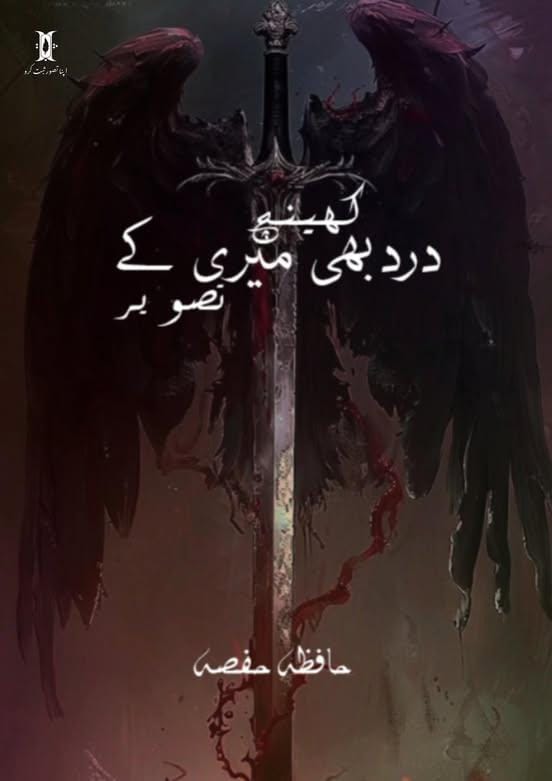کہانی ہے اُن گلیوں کی، جو کبھی زندگی کی گہوارہ تھیں،
جہاں ماؤں کی لوریاں گونجتی تھیں اور بچوں کی ہنسی ہوا میں بکھری رہتی تھی۔
مگر وقت کی بےرحمی اور بارود کی گونج نے اس سکون کو ملبے اور دھوئیں میں دفن کر دیا۔
یہ محض ایک افسانہ نہیں، درد اور جدوجہد کی داستان ہے۔
کیا تصویر درد کو قید کر سکتی ہے؟
کیا یوسف کا کیمرہ گولیوں اور ملبے تلے دفن چہروں کی گواہی بن سکتا ہے؟
کیا ہم اس بچے کا نام کبھی بھول پائیں گے… جو زخمی پاؤں اور چمکتی آنکھوں کے ساتھ پوچھتا ہے، “کیا آپ میری تصویر لیں گے؟”
کیا ہم اس ماں کی چیخ، اس گلی کی ویرانی، اس آخری شاٹر کی گونج کبھی سن پائیں گے؟
یہ محض کردار نہیں، درد کا حصہ ہیں۔ یہ افسانہ محض الفاظ کا مجموعہ نہیں، بلکہ گولیوں اور ملبے تلے دبی زندگی کی چیخ ہے۔
ایک آخری تصویر… ایک بے جان کیمرہ…
کیا ہم کبھی یہ درد محسوس کر پائیں گے؟؟
“The Last Photograph” is not your typical army-based romance, nor a fairy tale love story or enemies-to-lovers fantasy. Instead, it is a powerful, heart-wrenching narrative that echoes the silent screams of forgotten streets, bombarded cities, and shattered homes. A story that dives into the emotional devastation of war, the unseen resistance, and the painful resilience of those who live through it.
Set in once-vibrant alleys now buried under rubble, smoke, and sorrow, this novel gives voice to those whose stories are often lost in the chaos. These aren’t fictional characters wrapped in romantic suspense or forbidden love — these are real echoes of children who once laughed in sunlit lanes, of mothers whose lullabies were replaced by sirens, of lives that turned to ash overnight.
The protagonist, Yusuf, is not a soldier or a romantic hero. He is a photographer — a silent witness, a seeker of lost humanity, a man with a camera standing before death. In his lens, he tries to capture more than moments; he attempts to preserve souls. Can a photograph capture trauma? Can a shutter echo a mother’s scream or a child’s last smile? That’s the question this story asks — and never quite answers.
If you’re drawn to:
Heart-touching Urdu novels
War-torn settings and emotional storytelling
Dramas rooted in social realism
Narratives with strong themes of survival and resistance
Psychological and emotional depth in characters
Child-centric emotional arcs
Silent love and invisible losses
Stories with tragic beauty and haunting endings
Characters shaped by fire, not fantasy
Tales that go beyond tropes like love triangles and arranged marriages
…then The Last Photograph is your next unforgettable read.
Though it doesn’t follow the format of arranged marriage romance, jealous lovers, or revenge-based thrillers, it holds its place among top-tier Urdu fiction due to its emotional richness, raw imagery, and devastating truth. It belongs to the rare genre of socially conscious Urdu novels — where the battlefield is the home, the enemy is war itself, and the hero is the human spirit.
There is no glamorous love story here, but there is love — deep, aching, unconditional love for humanity, for memory, for what is lost. There is no classic army romance, but the novel still bleeds military footprints, airstrikes, and shattered windows. The story doesn’t offer happy-ever-afters, but it does gift the reader something more lasting: awareness, empathy, and the uncomfortable truth that not all stories are meant to end in joy.
If you love:
Emotionally intense, purpose-driven fiction
Narratives that reflect harsh societal realities
Stories where a camera is more powerful than a gun
Fiction rooted in fact
Tales of courage, tragedy, and memory
Deeply symbolic storytelling
…then The Last Photograph is a novel that will echo in your heart long after you’ve turned the last page.
In the world of trending Urdu novels, where romantic suspense, bad-boy lovers, and college-based love dramas dominate — The Last Photograph is a bold, haunting, and necessary voice. It doesn’t whisper sweet nothings — it screams forgotten names. It doesn’t flirt with tropes — it mourns reality.
This is not just a novel. It is a scream caught in silence, a photograph never developed, a name never remembered — a story the world should not forget.

